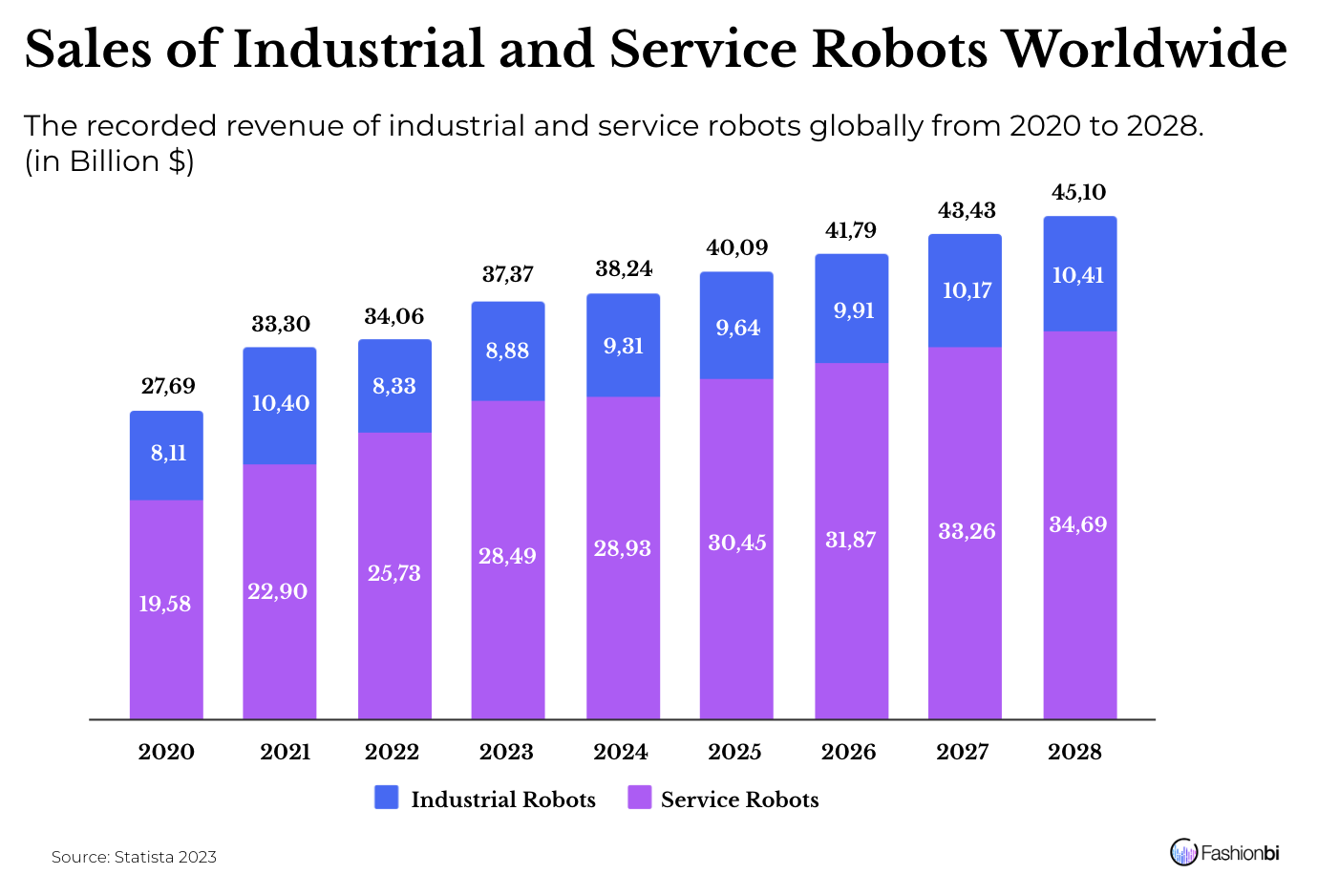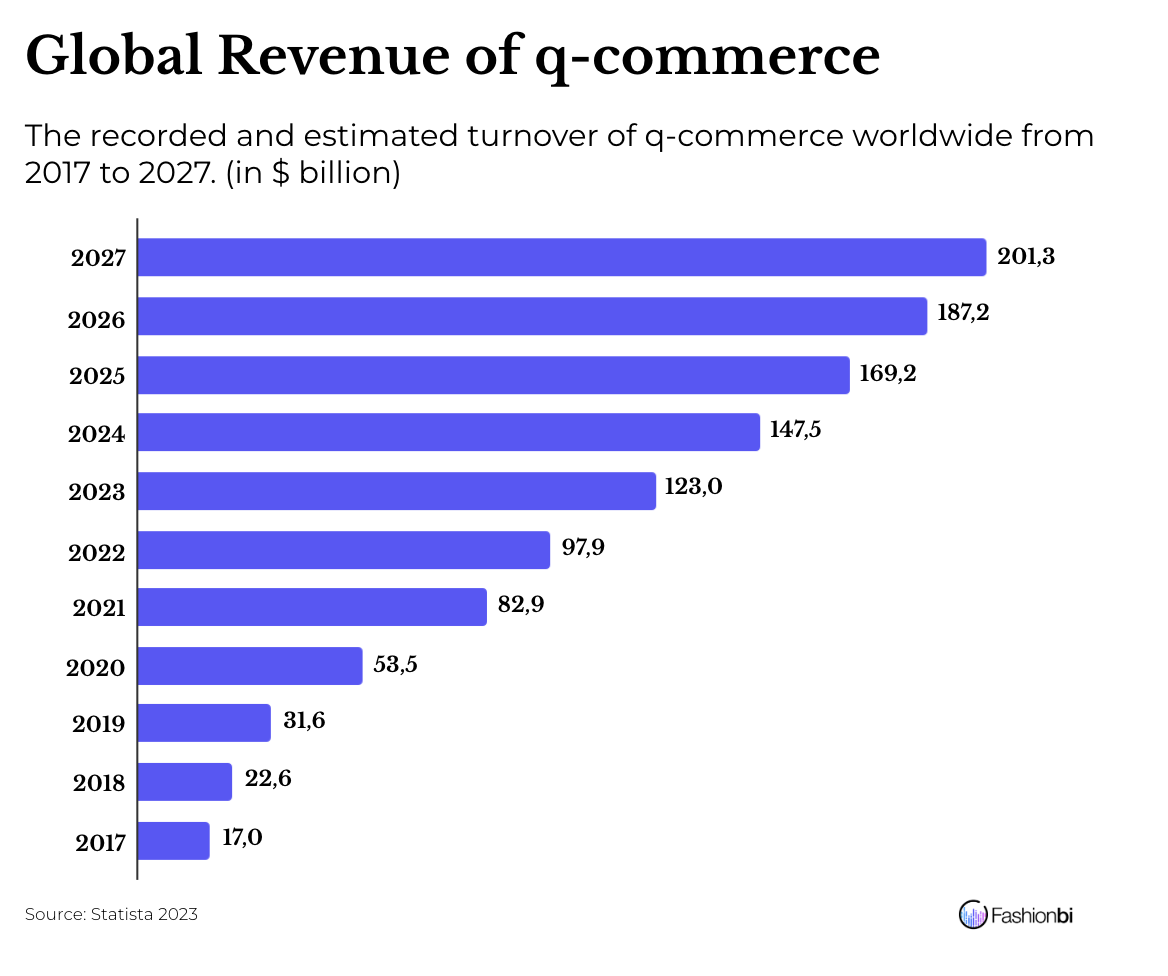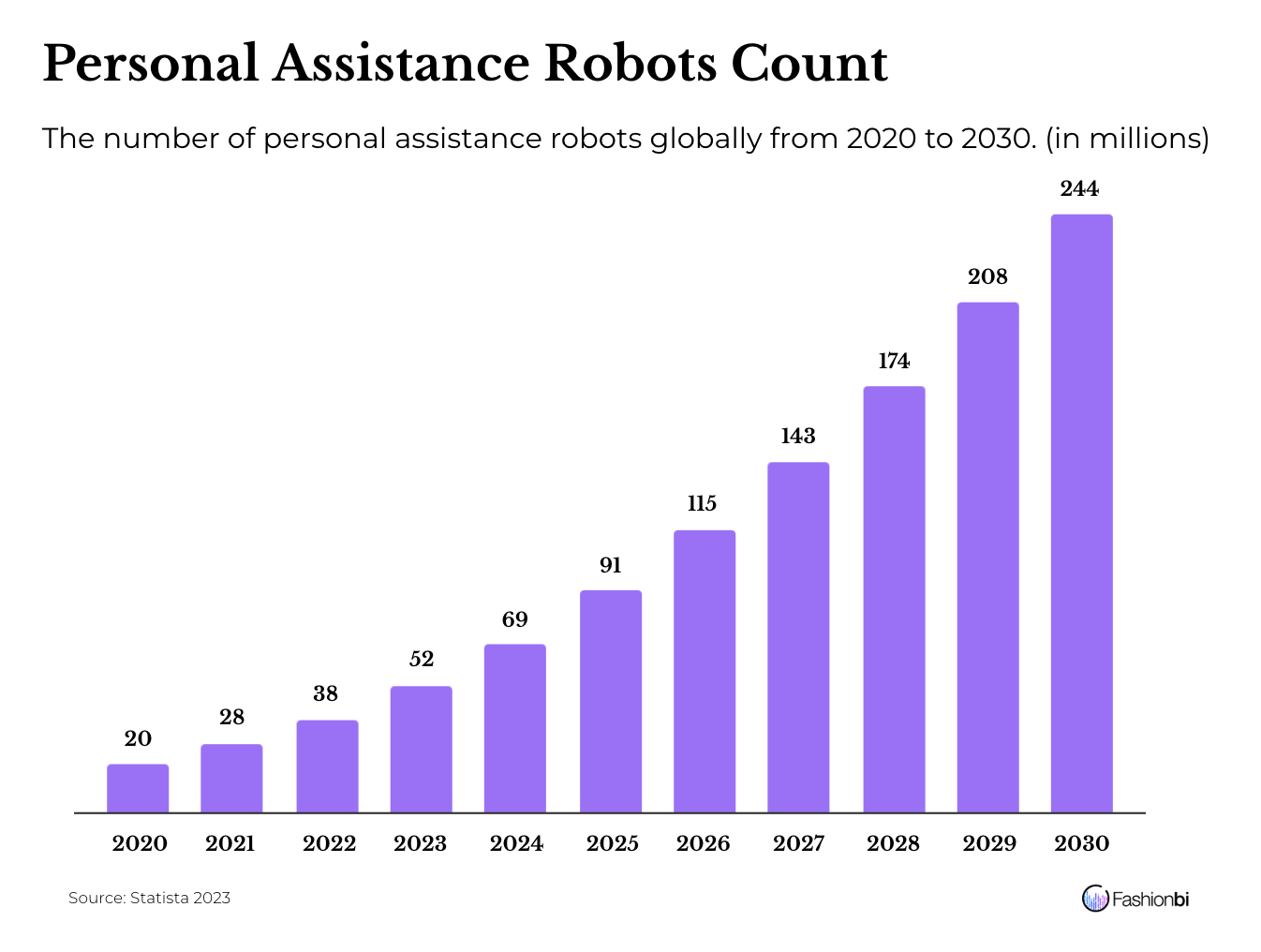Table of contents
With an increasing demand for products within a short period of time by consumers, decreasing labour market, and supply chain distress, retailers are collectively getting robotics into effect. Even though retailers are slow in implementing robotics such as automation, the rise in cost-of-living and pressure in consumer spending are driving them to use the services. The technology has to be accessible, intentional, and scalable. It is also important to humanise the tech by working under the ethos of giving priority to people.

China alone has recorded a growth of $40 billion in the service robot industry by 2027. Around 52% of retailers worldwide use robotics for packaging and shipping. In the next 10-15 years, the humanoid robotics industry is expected to reach $6 billion globally. With that, it can fulfil over 4% of the estimated labour shortage in US manufacturing units by 2030. Industrial robots are being used in warehouse activities of brands and e-commerce platforms such as Alibaba, which has automated warehouses almost entirely operated by robots, and Amazon, which employs over 750K robots to work in collaboration with its human employees.
Quick Commerce
Quick commerce, widely known as q-commerce, is an e-commerce category that focuses on quick-delivering products, generally in an hour. Not only in the future but also in the present, immediate availability of products is important, especially in the digital world as Gen Z and Alphas are expecting more in q-commerce. 67% of shoppers globally have agreed that delivery is an important feature. Retailers have to upgrade their delivery services through robotics and smart factories to deliver their consumers' expectations and to increase innovation.

Earlier, robotics were used more in behind the curtains such as warehouse service, and click-and-collect services. However, now, retailers and companies have to assist customers in getting comfortable with robotics.
As there is an increase in local retail, it is crucial to make delivery with community-driven strategies. For instance, using drone deliveries has been proven to be more effective in these regions rather than road transport. Amazon has deployed drone deliveries for medicines which will reach customers within an hour after ordering in October 2023.
Nike is using over a thousand robots to process the orders received in the specific distribution units. The label collaborated with Geek+ for a same-day delivery service in 2020. Brands such as Uniqlo are hiring robots to assist in packing and delivering. Zara introduced “click and collect” services with the help of AI robots. Once the customers order the products on the website, they can collect the products from the automated retail store. This will quicken the delivery process.
Robots as Companions
Using robots for household chores is old news now. Presently, they are getting more attention in giving companionship to their owners. Robotic social companions are being developed to be used for several purposes including shopping grocery, apparel, and other personal goods. Retailers are getting innovative by incorporating a relationship between consumers and automated society.
Brands are requested to give importance to all global population ages. They have to figure out a way to support and help older people and their relative networks by using robotics. The National Innovation Centre for Ageing at Newcastle University worked closely with Piaggio Fast Forward and tested Gita robots to assist elderly people during shopping. Understanding and targeting the groups that are overlooked often such as the single population of the APAC region is a viable strategy.
Tech can elevate the self-care routine and serve disabled people. Brands and retailers can use this. For example, the nail polish industry is introducing robot manicurists to get an accurate service. There is a social-emotional robot named Moxie introduced to assist kids with autism and anxiety.
Target uses an integrated Clockwork as a robot manicurist with a charge of $10 and takes only 10 minutes. It also features AI to scan and analyse one’s nails. Moncler has launched a miniature robot named LOVOT to spread unconditional love at The Art of Genius event in London.
Amazon has invested $3,1 million in Labrador Systems through the Alexa Fund in 2023. The Labrador is an in-home assistant to help people with chronic pain and other health conditions.

Sustainability, 3D Printing and What Not
Leveraging robotic services to track the raw material used to attain the goals of circularity is the key strategy for fashion brands. Implementing this technology in logistics, agriculture, and in water-and-sanitation management through the R&D department can help the brands to attain sustainability. France-based startup Meropy introduces the SentiV robot to inspect the crops’ health by GPS and camera. Several cities in India are using AI-driven robots to fight against water and sanitation problems. Nike has incorporated robotics in the recycling process of its products to give them a second life. Skims uses autonomous robots to do some low-grade jobs such as fetching the packaging for the customers to save time for human employees. Levi Strauss & Co. uses robots for production, streamlining, and reducing waste. H&M minimised the need for employees to do repetitive tasks by implementing a Rapid Robotic tote stacking and dispatching system that will be a crucial addition to its omnichannel distribution centre which will be at service for the retail stores and online platform.
Robotic arm technology has helped designers to get precise and customizable designs. Moreover, it can be put to work with flexible filaments, biodegradable powders, pastes, and recycled pellets. The production using robotic arms that can be personalised and adjusted to accommodate any material has allied the creators to use sustainable materials in this field. At the same time, robotics keeps the garments affordable. Iris Van Harpen used robotic arms to produce a circular dress for its Spring Summer 2016 show.
Sometimes, relying on robots more can be fatal. In December 2023, Tesla witnessed its engineer getting brutally attacked by its robot due to a malfunction at its Texas factory.
Cover Image: Amazon's humanoid robots at its US warehouse, courtesy IGN.